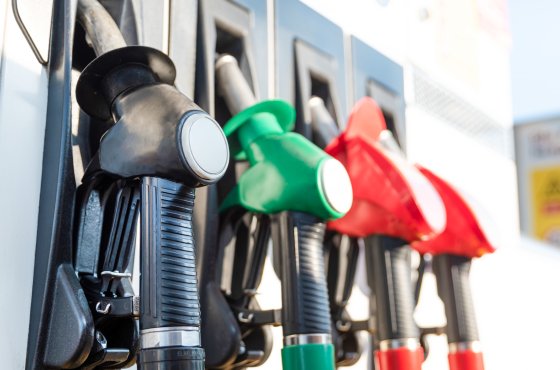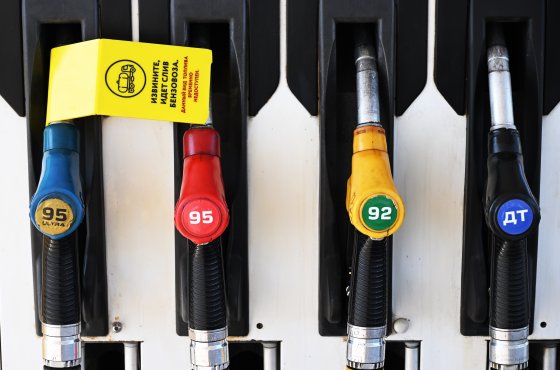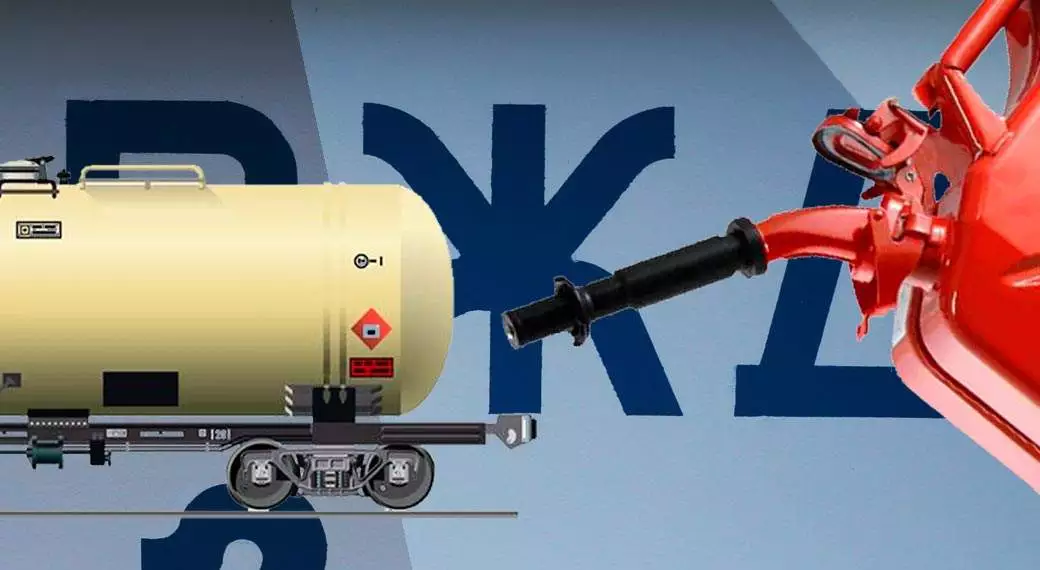Fuel prices for gasoline and diesel did not plummet following the ban on nullifying subsidies for oil producers on fuel supplies to the domestic market (the "damper"), which has been implemented from October 1 of this year until May 1, 2026. This effectively confirms the statements of experts who view the ban as a measure to support oil refineries (refineries), rather than a direct attempt to influence fuel prices. Nonetheless, the ban is expected to ultimately impact the cost of gasoline and diesel fuel.
In the retail market, it is too soon to expect any effects; changes in prices may slow down or halt at least two weeks after a significant decrease in exchange quotes. Currently, there have been no notable changes on the St. Petersburg Exchange. A-92 gasoline has continued to rise slowly, A-95 gasoline has slightly decreased in price, and diesel fuel quotes remain at previous levels. Demand for fuel is high, and the transition to winter, more expensive grades of diesel has begun, reflecting on retail diesel prices.
According to Yuri Stankevich, Deputy Chairman of the State Duma Committee on Energy, the effect of the presidential decree (the ban on nullifying the damper) will become evident in the coming weeks. He believes that this decision is tied to activities aimed at completing unscheduled repairs at refineries and accumulating fuel stocks in the regions.
To add to this, it can be noted that for August, oil producers did not receive the damper subsidy for gasoline, and they are likely not to receive it for September either. In these months, the exchange price was above the threshold necessary for receiving budget subsidies, and the ban only started on October 1. These result in additional costs which oil companies can only cover through high wholesale prices that are primarily based on exchange quotes. However, there is a nuance here.
As noted by Dmitry Gusev, Deputy Chairman of the Supervisory Board of the "Reliable Partner" association and a member of the expert council for the "Russian Gas Station" competition, the main factor driving the growth in exchange quotes is, surprisingly, prices in the small wholesale market, which in some regions are 10,000 to 30,000 rubles higher than those in the large wholesale market. Essentially, given the regulation of large wholesale prices through the damper mechanism and adjustments in exchange trading, and the regulation of retail through price growth restrictions based on inflation levels, the small wholesale segment has remained overlooked, and this segment is now a market tool that reflects real demand and supply. Since prices here significantly exceed exchange quotes, everyone is eager to buy at large wholesale prices at any price, understanding that they can earn well by selling fuel in the small wholesale segment. Consequently, until regulators focus on the small wholesale market, growth on the exchange will continue. However, prices are expected to stop rising by November, and at the latest by December, simply due to a decline in demand, according to the expert.
According to Sergey Frolov, Managing Partner of NEFT Research, wholesale prices will remain at maximum levels until the market reaches equilibrium. The high season for gasoline consumption has ended, but production issues are currently preventing the market from balancing. The expert anticipates that elevated exchange quotes will remain for at least another month.
As winter approaches, the rise in prices will stop at least due to a drop in demand.
He emphasizes that prices at gas stations of major oil companies are being artificially sustained – gasoline is being sold below profitability. As for the independent segment, some gas stations have already stopped selling gasoline due to shortages and unprofitability. Competing with vertically integrated oil companies (VIOC), which manage the entire production cycle from extraction to fuel sales at gas stations, is currently impossible for them.
A similar perspective is held by Mark Shumilov, an analyst at Renaissance Capital's resource sector. He considers insufficient fuel output due to damage at refineries as the main reason for price increases. In his estimation, it will take the plants anywhere from several weeks to two months to restore previous production levels. In the absence of new emergencies, it is expected that gasoline and diesel prices will normalize closer to the end of the year. Additionally, limited volumes of fuel imports from other countries may also help lower prices, the expert notes.
On the other hand, Sergey Tereshkin, CEO of the OPEN OIL MARKET fuel marketplace, holds a different view. If exchange prices are no longer considered in the damper calculations, there will be no incentives to restrain them. Therefore, price increases will continue over the coming weeks and months. The de facto abandonment of nullifying the damper serves as a support measure for refining amid a budget lacking funds for increased subsidies to refineries. Oil producers need to finance unscheduled repairs at their refineries, and earnings from fuel sales on the exchange could become part of covering these costs.
There are no grounds to expect a slowdown in price growth in December; retail price increases for gasoline could exceed 15% by the end of 2025 (December to December), Tereshkin is confident.
Due to heightened market nerves, various proposals are emerging on how to accelerate the process of halting the growth of exchange quotes, and subsequently – prices at gas stations. The National Automobile Union (NAU) has proposed establishing maximum allowable prices (price caps) for gasoline and diesel at gas stations, as reported by "Izvestia."
However, experts view this initiative with considerable skepticism. It is unfeasible as it would lead to even greater market tension: increasing shortages and the closure of independent gas stations, explains Stankevich. The union's rationale is clear, but following it would require extending beyond fuel prices to also fix prices on vehicles, spare parts, all consumables, and goods in stores at gas stations. Among all possible options, this one is the worst under current conditions, and the government is unlikely to pursue it, he believes.
Frolov argues that the NAU's proposal is populism. The only outcome of such a price freeze would be the bankruptcy of independent gas stations and the closure of a portion of VIOC stations. Tereshkin points out that the system will be difficult to administer, making this measure as ineffective as the price caps on Russian oil exports.
Sources:
RG.RU



